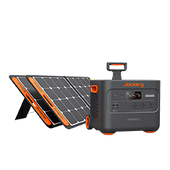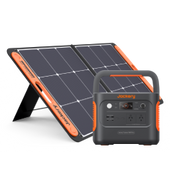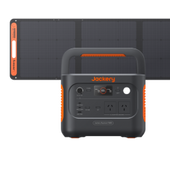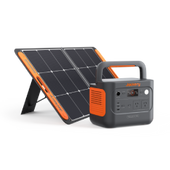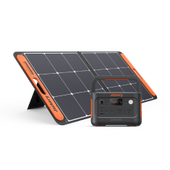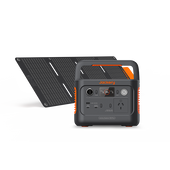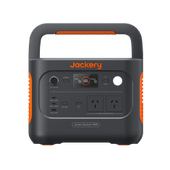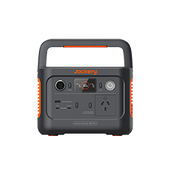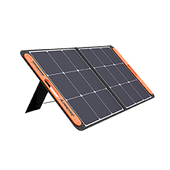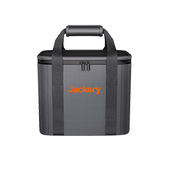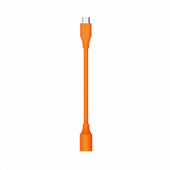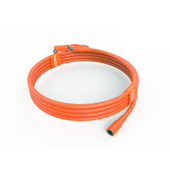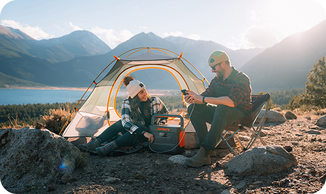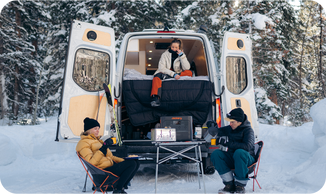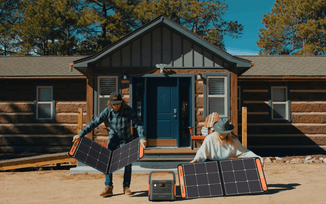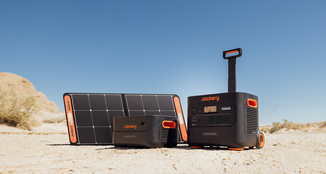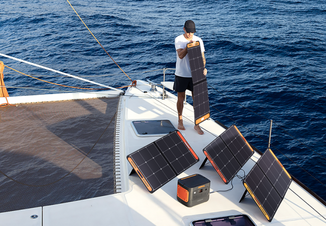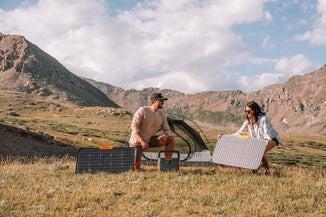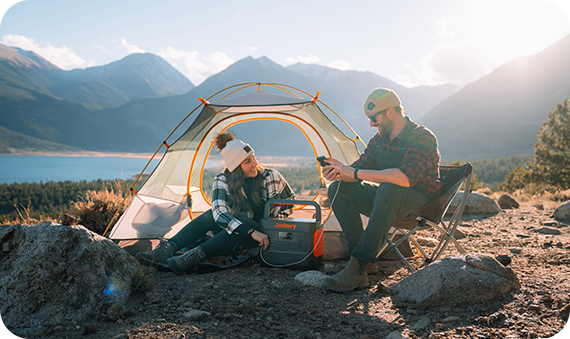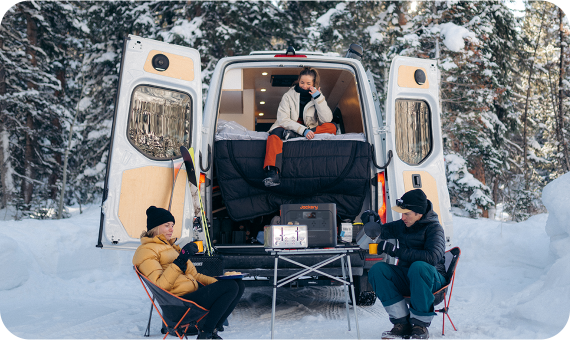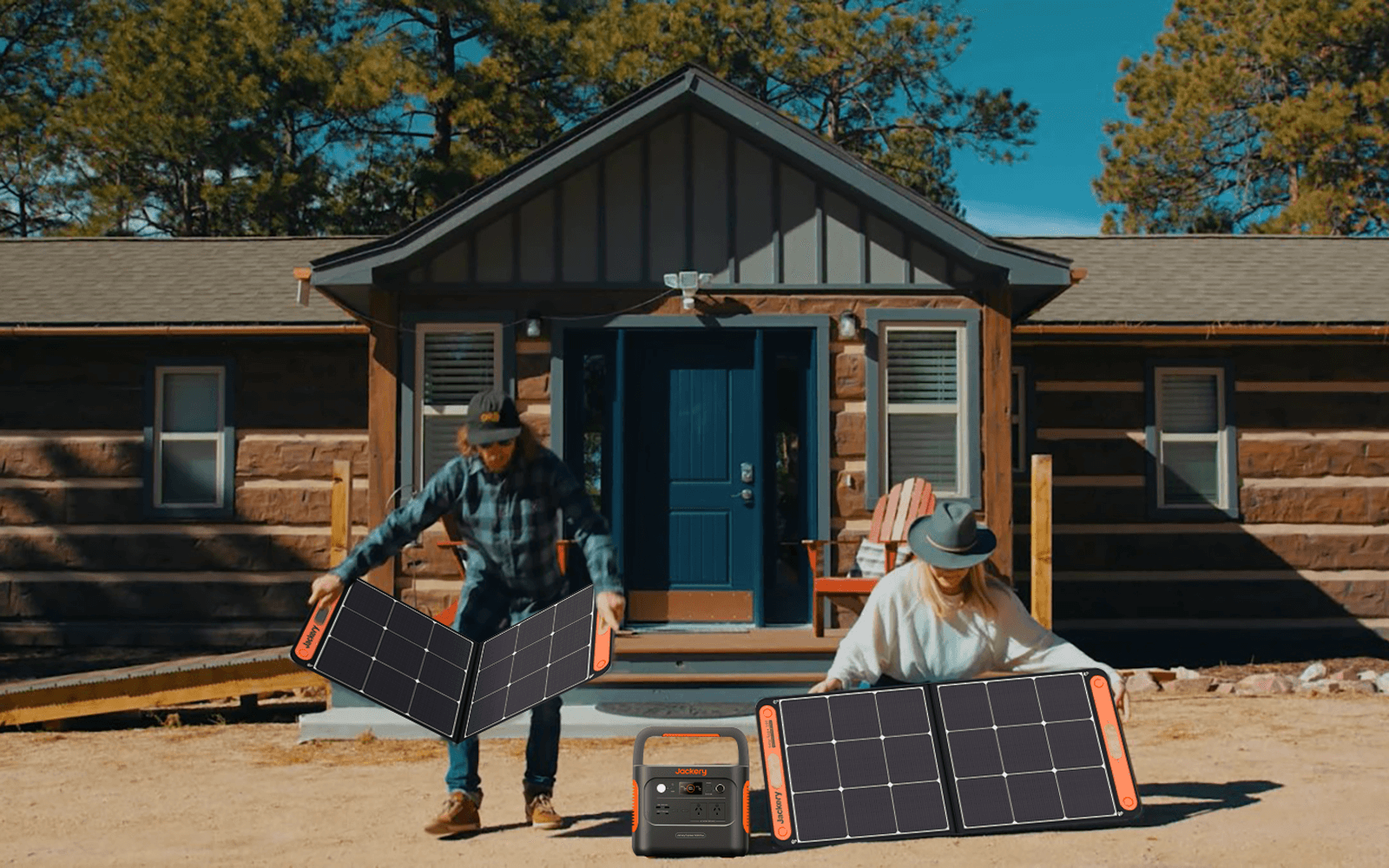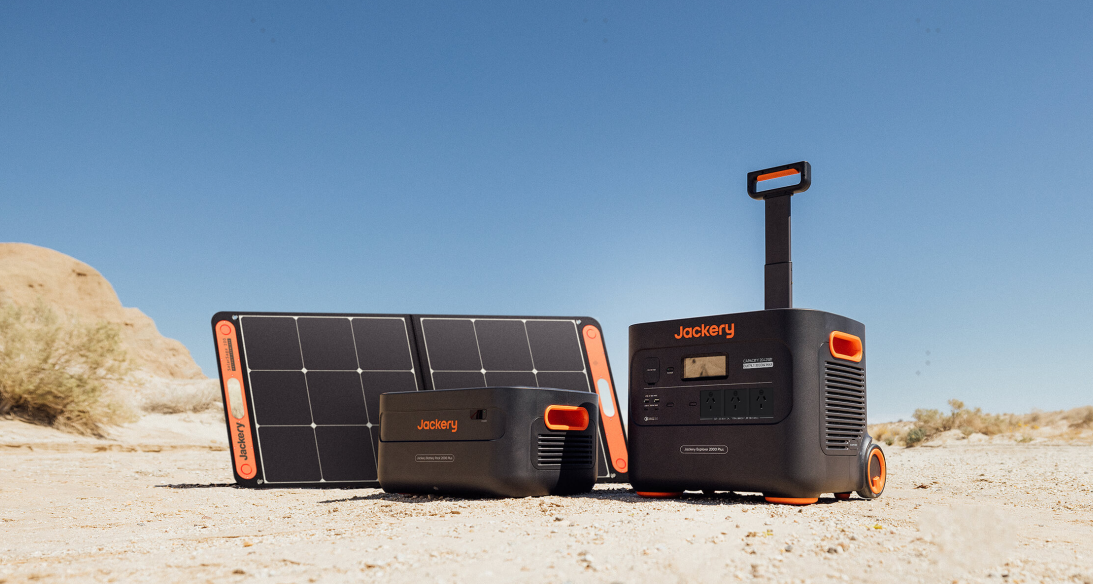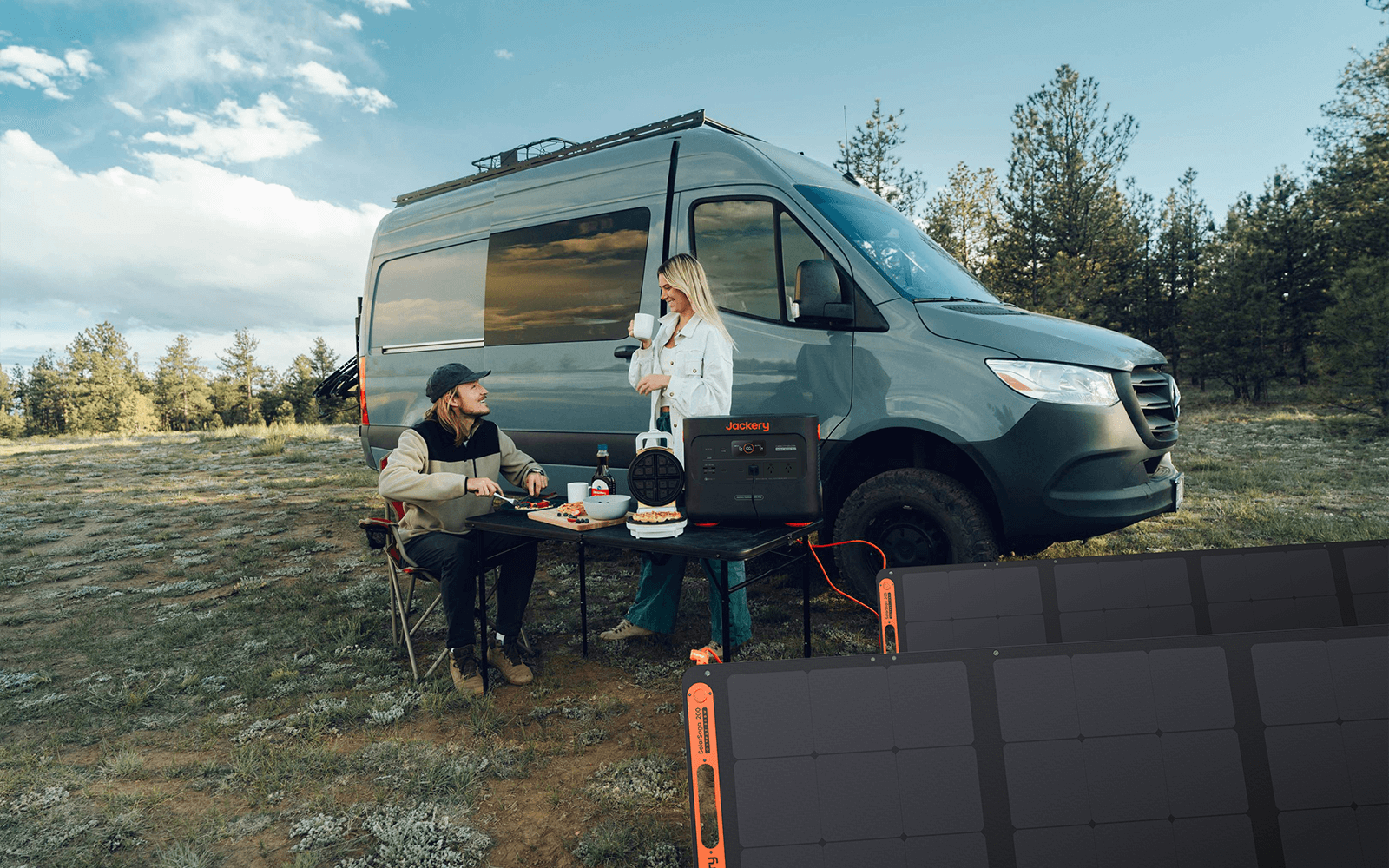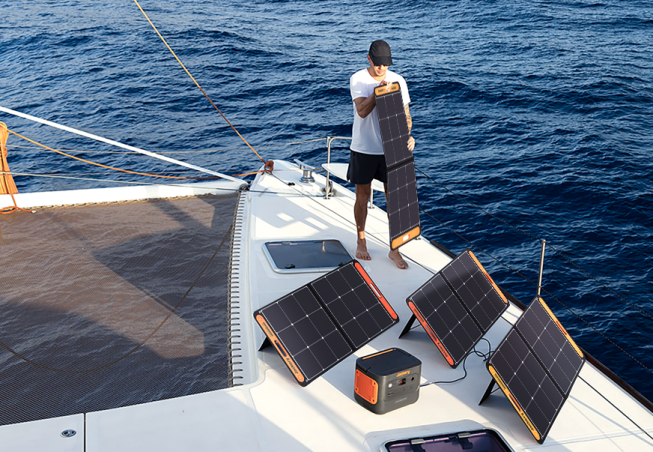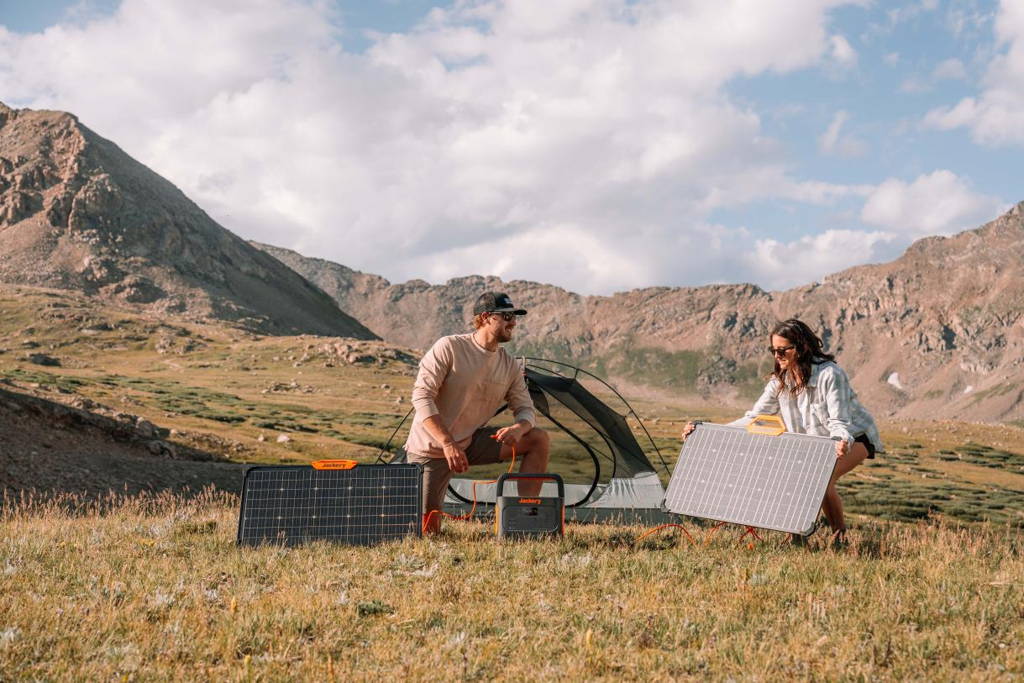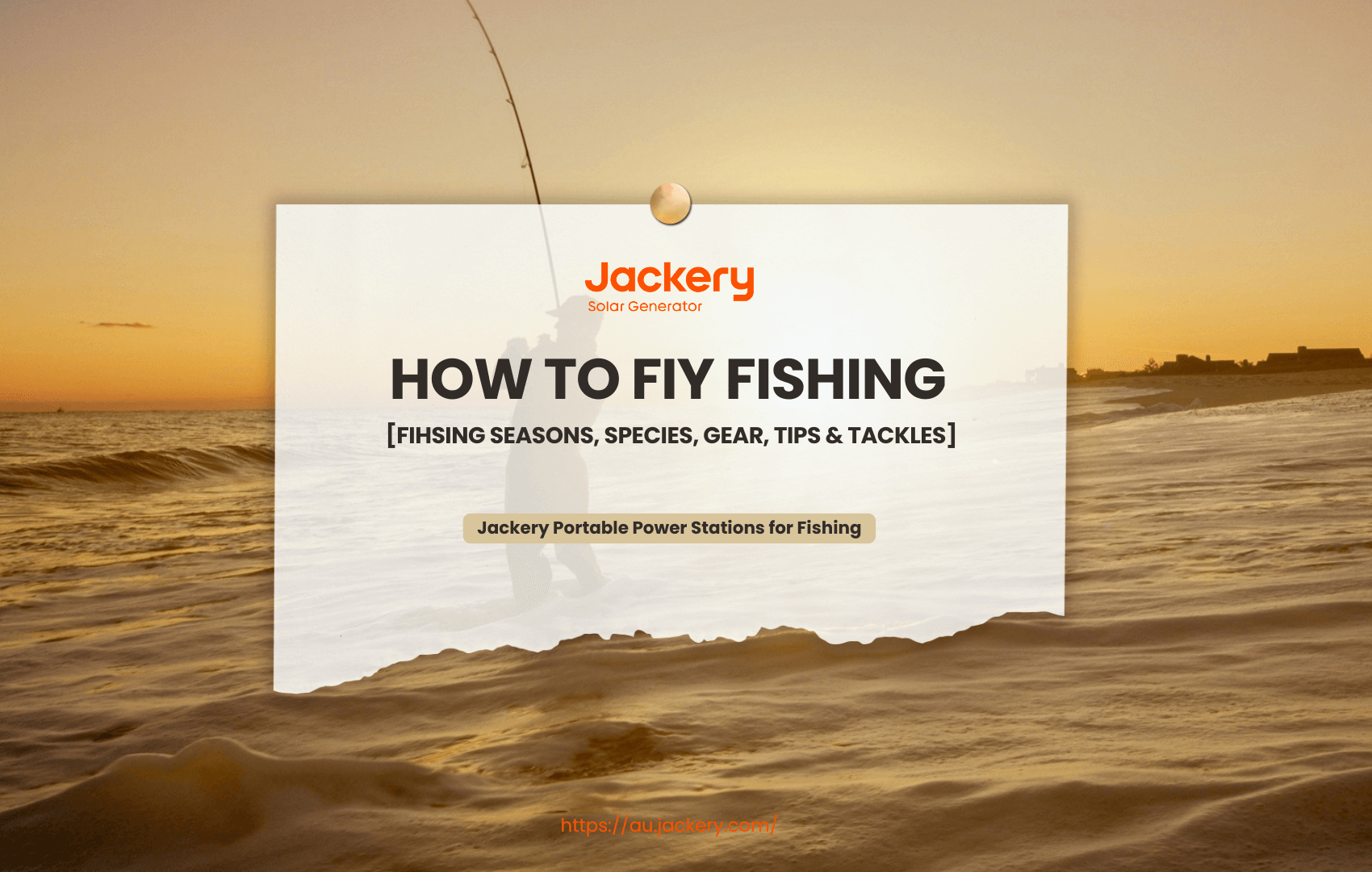|
Key Takeaways: |
|
- A preliminary introduction to Tasmania's basic situation and climate. - Winter may be the least crowded season in Tasmania, but there is nothing lifeless about a visit to the island during June, July, and August. - We've rounded up five must-see places and five must-do things in Tasmania in winter to help you plan your trip. - Some questions and answers you may have about Tasmania. - We recommend Jackery Explorer 600 Plus and 300 Plus to charge your electronics and devices during your winter trip. |
Tasmania in Winter Overview
Australia's continental southeast corner is home to Tasmania. Despite being the smallest state in Australia in terms of population and area, it attracts many tourists due to its rich history, pristine wilderness, and varied, breathtaking landscape.
With its thriving culinary scene, cool-climate wines, and more than 120 beaches to discover, Tasmania, the king of islands, is a sensory extravaganza. Embrace the island's deep and complicated history while appreciating the stories, music, art, and culture of the Aboriginal people who continue to care for this precious place.
From Hobart's cultural attractions and Salamanca Markets to trekking through the western wilderness or snorkelling along the East Coast – there is no shortage of activities in Tasmania. No matter what type of adventure you seek – sailing through scenic waterways or savouring local produce at Bruny Island – you'll find it all here in this incredible destination.
Tasmania's climate can be as unpredictable as a game of roulette, so preparing for all types of weather is crucial while embarking on your adventure. The island state experiences four seasons, each offering a unique charm and beauty. The coldest season is winter, which typically lasts from December to February. Snow-capped mountains create gorgeous scenery perfect for skiing or lounging by a fire.
Winter may be the least crowded season in Tasmania, but there is nothing lifeless about a visit to the island during June, July, and August. The coldest and wettest months of the year are June, July, and August, during which there is significant snowfall in the higher altitudes. Generally, the temperature is higher than in mainland Australia, and it rarely gets below freezing in most coastal Tasmania. The average highs are from 12 Celcius (coastal) to 3 Celcius (inland), and the elevated inland areas average 0 Celcius.
Top Places To Visit In Tasmania in Winter
While you may decide to visit Tasmania for internationally acclaimed wine, there is much more to explore. Here are five must-see places in Tasmania during winter.

Satellite Island
Have you ever dreamed of staying on your very own private island? This little patch of land was unintentionally found in 1792 during an expedition to Adventure Bay; it was privately purchased in the 1960s for farming salmon and sheep; you can get here by boat from the mainland or, if you happen to have a spare helicopter, by helicopter. Sheep, wild quail, albatross, Pacific gulls, and two endangered white-breasted sea eagles can all be found on the island.
Visitors are free to forage for everything they want while they're here, including fresh produce, fruit, and herbs from the organic garden and orchard, go rock lobster fishing in the south, or use one of the kayaks to reach the punt, a great place to catch flathead.
Mona (Museum of Old and New Art)
Mona (Museum of Old and New Art) holds the Winter Solstice Festival Dark Mofo every June. Exciting activities include the Winter Feast, which attracts thousands of food enthusiasts, and the Winter Solstice Swim, offering an opportunity for people from diverse backgrounds to participate. People of all ages braved the cold weather to take a naked dip in the River Twen.
Travel to the area in July. You can attend the Huon Valley Midwinter Festival, which celebrates the history of local apple growing and experiences a long-standing traditional wine feast. During the celebration, carnival guests will sing and beat drums and cans to scare away evil spirits, wake up the apple trees, and pray for a good harvest.
The Port Arthur
The Port Arthur Gaol ruins are eerie all year round at any time of the year, but once winter comes, you understand how lonely and terrifying it must have been for the poor people who were forced to live here from the other side of the world! Why not light up a lantern and take a ghost tour to discover the supernatural side of this site, where unexplained supernatural events may occur?
Mt Field National Park
Mt Field National Park is a 90-minute from Nipaluna/Hobart through the scenic Derwent Valley. Winter offers a new take on the park, with frozen lakes and snow-covered Pandani forests providing all the Narnia vibes. Take a short walk around Lake Dobson or enjoy the scenic mountain vistas from the Tarn Shelf Circuit.
If you're into snow sports, hit the slopes at Mount Mawson. Several tow operations take place during the snow season or pack a sledge for relaxed family fun. Be sure to check the road status to Lake Dobson before leaving Hobart, as snowy conditions may require snow chains to be fitted, the road may be closed, or the road may be accessible to 4WD vehicles only.
The Hartz Mountains National Park
The spectacular Hartz Mountains National Park is accessed via Geeveston in the far south. The unique landscape, shaped millions of years ago by ancient glaciers, offers numerous opportunities to see snow.
If you enjoy hiking, pop the 3–5 hour / 7.4km return walk to Hartz Peak on your list. At the top, the iconic view of Hartz Lake, with rugged mountain peaks in the distance, is even more remarkable when the snow has settled. For those not so keen on a long walk, Arve Falls is a 20-minute return journey, or you can enjoy the views from Waratah Lookout. If you want more adventures in the area, visit Tahune Adventures and enjoy views of the snow-capped peaks from the treetops.
Top Things to Do in Tasmania in Winter
Travellers often overlook winter in Tasmania. Travellers of the cold – but read on, and you'll find it's a particular time filled with festivals and the opportunity to take part in long-standing traditions.
If you want to explore Tasmania in winter, please pack rain gear, waterproof footwear, warm socks, a hat, scarf, gloves, a Bumbershoot, an extra set of clothes in case you forget your Bumbershoot and a good winter jacket. Here are five things to do in Tasmania in winter.

Feast on Apples at the Huon Valley Mid-Winter Festival
Several winter festivals celebrate apple cider and other apple products, as Tasmania is well-known for its apple industry. One of the most popular apple celebrations is the Huon Valley Mid-Winter Festival. For 2025, the festival will be held on July 15th and 16th. The two-day festival honours the region's apple-growing history and includes various events for locals and guests.
The Wassail is the highlight of the festival. It is part of an old tradition used to protect the cider apple trees from evil spirits and increase the chances of a plentiful crop. Apple wassailing originated in England and was carried over by early English settlers. Participants would sing songs, feed slices of toast to the birds, and shoot rifles to scare off the demons.
Apple's sailing in Huon Valley still includes songs and various fun activities. Enjoy music from folk-funk bands and entertaining outdoor displays. The festival is held at Willie Smith's Apple Shed. Pastures and old farm buildings surround the sizeable rustic barn.
You can tour the facilities, learn more about how apple cider and apple brandy are produced, and pick up some souvenirs at the gift shop. The Apple Shed also has a restaurant (and yes, it has more than just apple-based dishes!). You can fill up on delicious baked goods, jams, preserves, and cheeses made by local artisans.
Tour the Wineries of Tasmania
Along with apples, Tasmania is recognized for its vast selection of wineries. The island is home to over 200 wineries and more than 110 vineyards. Tasmania is further south than the rest of the country's wine regions, which allows local wineries to benefit from the cooler climate. You are always near a winery, whether travelling along the coast or closer to the island's centre.
The variety of Tasmanian wineries can also be overwhelming. If you want to save time and energy, try a wine tour. You can choose from various tours covering different regions of the island, from Northern Tasmania to the south coast. Whether you want to spend one day, two days, or an entire week touring Tasmania's wine country, you can find a package to suit your needs.
The tours include comfortable accommodations, full meals, wine tastings, and sightseeing opportunities. You can travel as a group or venture off alone to see some of the sights. If you prefer whisky over wine, travel the Tasmanian Whisky Trail. Tourism Australia says the trail connects over 20 distilleries around the island. If you visit toward the middle of August, you can also enjoy the Tasmanian Whisky Week.
The Tasmanian Whisky Week is a week-long celebration of locally produced blends winning numerous awards. Tasmanian whisky is unique due to the pureness of the mountain spring waters and the quality of the locally grown barley and produce.
See Aurora Australis and Starry Nights
While Tasmania's skies host spectacular natural light displays year-round, winter is the best time to see the Aurora Australis. Tasmania's islands and national parks have minimal light pollution, significantly increasing your chances of successfully capturing the Aurora Australis.
If you are in Hobart, find a cloudless, moonless night and try your luck at Mount Wellington ( kunanyi /Mount Wellington) or the neighbouring Mount Nelson. If you're lucky, you'll see flashes of green, blue, purple, and red light illuminating the night sky.
Alpine Trekking
Whether you choose a winter adventure along Tasmania's most iconic walking trail in the Cradle Mountain National Park or a series of spectacular day walks exploring the alpine wilderness of the Walls of Jerusalem by foot and via snowshoe, the excitement of trekking in a winter wonderland will bring a physical challenge.
As long as you are fit, prepared to camp in winter, and have the right equipment, trekking in Tasmania in winter is stunning. This is especially true on the Overland Track, where during the peak season, heading to the top of Cradle Plateau for incredible views of Dove Lake and climbing Mount Ossa, Tasmania's highest peak at 1617m, which can be somewhat tarnished by other tourists clambering to do the same.
With the trail (almost) all to yourself, you'll have unique photographic opportunities that few trekkers can experience.
Cruise in Hobart
There are many things to do in Hobart, but if you need a break from sightseeing, set sail on a historic cruise! Grab the gang and get down on this boat tour at Murray Street Pier. As you sail down south, spot popular places like Battery Point, Sandy Bay, and the oldest casino in Australia. More highlights include the Derwent River, Kangaroo Bluff, Tasman Bridge, Royal Botanic Garden, and Government House.
As you sail aboard this 62-foot sailboat, you can enjoy a freshly-made lunch with astounding vistas. This sailboat tour of Hobart is one of the top things for families to do in Tasmania, especially those looking to mix things up!
There are more fun things to do in Tasmania:
How to Stay Safe During Your Tasmania Winter Trip?
For a safe winter trip to Tasmania, be sure to check the weather forecast frequently, dress in layers for the cold weather, and drive carefully on potentially icy roads, especially in mountainous areas. Bring emergency supplies and be aware of wildlife that can be dangerous, particularly at dawn and dusk. If necessary, take a shuttle bus to areas that receive heavy snowfall, and always inform someone about your travel plans.

Do not forget how wild Tasmania is. It's not hard to get to the wilderness, but once you get there, you're there. That's what's so great about it. Be careful, though. Tell someone where you're going every time, and don't walk alone. Plus, don't forget to sign the national park log books and bring an emergency kit. A map, compass, and lots of water are also important. Plus, pills for cleaning. Pack a lot of layers and waterproof clothing.
Always check the weather before swimming, and only swim in designated areas. In Tasmania, the currents can be powerful, so do what the pros say. You can swim in some places, but it's best to ask the locals for help. Flinders Island is an excellent place for kids to swim and one of the best places to swim in general. Additionally, the water is cold, similar to the UK rather than Australia, so be prepared.
Mountain roads can be tricky to drive on because they have sharp turns, ice, and wildlife. People often crash when they swerve to avoid an animal, so drive slowly and be ready to stop. Most animals can be seen at dawn and dusk.
Pack the essentials for winter outings in Tasmania. Winter in Tasmania can be incredibly rewarding, with crisp air, stunning landscapes, and fewer crowds. However, it also demands thorough preparation, especially regarding outdoor safety, as weather conditions can change rapidly and become severe, particularly in alpine or remote areas.
The principle of layering is paramount for staying warm and dry in Tasmania's variable winter conditions. Avoid cotton, as it absorbs moisture and loses its insulating properties when wet. Opt for wool (especially merino) or synthetic materials. Also, remember to take the navigation and first aid items to ensure personal safety. Moreover, whether you're exploring the Overland Track, camping by a remote lake, or simply road-tripping, your electronic devices are vital. A Jackery Portable Power Station can power your electronics and devices, even in cold weather conditions.

The following essentials should be taken on your winter outings in Tasmania.
|
Things to Take for Winter Outings in Tasmania |
||
|
Base Layers |
Mid-Layers |
Outer-Layers |
|
Warm Hat |
Gloves |
Warm Socks |
|
Gaiters |
Footwear |
Navigation Tool |
|
GPS Device |
PLB |
First Aid Kit |
|
Emergency Shelter |
Whistle |
Repair Kit |
|
High-Energy Food |
Water Bottle |
Water Filter |
|
Trash Bags |
Toiletries |
Portable Power |
*The items are only for reference.
Jackery Portable Power Stations for Winter Trips
With its snow-capped mountains, roaring fireplaces, and peaceful countryside, Tasmania is a magnificent getaway destination in the winter. The cooler months provide a distinctive view of this island paradise, whether you're visiting the Bay of Fires or Cradle Mountain.
From charging necessary equipment to powering your camera, Jackery Portable Power Stations offer sustainable energy for your trip. Allow Jackery to add to your Tasmanian winter vacation, where convenience and nature coexist. Tasmania's winter temperatures, particularly in the highlands or overnight in remote areas, can drop significantly, often hovering around freezing or even below. Jackery Portable Power Stations, particularly those equipped with LiFePO4 batteries (such as the Explorer 600 Plus or 300 Plus), are specifically designed for enhanced performance in cold weather conditions.
Winter in Tasmania calls for warmth and comfort. A Jackery can run low-wattage heated blankets or electric throws (a game-changer for cold nights in a tent or van), providing essential warmth without relying on a noisy or fume-producing generator.
Jackery Explorer 600 Plus
Choosing a Jackery Explorer 600 Plus for a winter trip to Tasmania is a sensible decision, primarily due to its combination of portability, cold-weather performance, and the type of power needs you're likely to have.

The Jackery Explorer 600 Plus Portable Power Station offers exceptional value for long-term use. Its 800W output and 632Wh capacity powers everything from outdoor gear to household essentials. Its durable LFP battery guarantees 4000 cycles, maintaining high performance for over a decade.
The Jackery Explorer 600 Plus uses a LiFePO4 (Lithium Iron Phosphate) battery. These batteries are known for their superior performance and stability in colder temperatures compared to traditional Lithium-ion (NMC) batteries.
While all batteries will see some reduced efficiency in the cold, the Explorer 600 Plus is rated for discharge temperatures as low as -10°C (14°F) and charging temperatures from 0°C (32°F) to 45°C (113°F). Tasmania's winter temperatures can range from 3 °C to 12.3°C (37.4°F to 54.1°F) in coastal areas, with colder temperatures (potentially below freezing) in the highlands. This means the Jackery 600 Plus is well within its operational discharge range, making it reliable for use.
Weighing around 16.1 lbs (7.3 kg), the Explorer 600 Plus is remarkably lightweight and compact for its capacity. This is a significant advantage when travelling in winter, as you'll likely have more bulky clothing and gear. It won't add excessive weight or take up too much precious space in your vehicle or backpack. Its integrated foldable handle makes it easy to carry even with cold hands.
- High-Level Outdoor Durability
- 800W Output / 632Wh Capacity
- It weighs just 7.3 kg (16.1 lbs)
- Full Charge in 1 Hour with Emergency Super Charging Mode
- LFP battery with a 4000-cycle lifespan
- UPS functionality with a switch time of less than 20ms
|
Jackery Explorer 600 Plus Working Hours |
|
|
Light (3W) |
54H |
|
Mobile Phone (29W) |
27 Times |
|
Laptop (80W) |
7 Times |
|
Camera (8.4W) |
27 Times |
|
Drone (90W) |
5.6H |
(*The working hours are only for reference; the actual working hours depend on your usage.)
Jackery Explorer 300 Plus
Whether handling a power outage at home or venturing into the great outdoors, the Jackery Explorer 300 Plus Portable Power Station is your dependable companion in every circumstance. At only 3.75 kg, it is incredibly lightweight, easy to carry, and fits neatly into your bag for maximum convenience. With a 288Wh capacity and 300W output, it provides remarkable power despite its small size, enabling various devices.

The dual USB-C connections on this power station, each with a maximum output of 100W, make it stand out for its quick and simultaneous charging capabilities. With four charging options—Jackery Solar Panels, wall outlets, carports, and USB-C—its adaptability is unparalleled. Thanks to its whisper-quiet and emission-free operation, the Explorer 300 Plus is an environmentally friendly energy solution that meets contemporary sustainability standards.
With a 10-year lifespan, an LFP battery, and cutting-edge ChargeShield Technology for optimal protection, the 300 Plus was designed with longevity and safety in mind. The Explorer 300 Plus is an exceptional option for portable energy solutions since it provides dependable power, robust features, and peace of mind when planning for emergencies or going off the grid.
- Portable: 12.8V/22.5Ah/3.75Kg.
- Long-lasting: Features an LFP battery with a 10-year lifespan.
- Ultra-Safe: High FCC/CE and UL certifications, innovative ChargeShield Technology (52 forms of protection).
- Sustainable: Whisper-quiet, emission-free, and offers 4-way charging (solar, mains, car lighter, type-C).
- Supports pass-through charging: Charge the power station and your devices simultaneously.
|
Jackery Explorer 300 Plus Working Hours |
|
|
Drone (90W) |
5 Times |
|
Camera (8.4W) |
12 Times |
|
Mobile Phone (29W) |
13 Times |
|
Laptop (80W) |
2.2 Times |
|
Go Pro (5W) |
40 Times |
(*The working hours are only for reference; the actual working hours depend on your usage.)
Tasmania in Winter FAQs
The following are the frequently asked questions about Tasmania in Winter.
1. What eco-friendly travel options or sustainable practices can be followed while exploring Tasmania?
By adopting sustainable habits and eco-friendly travel options, you may reduce the environmental impact of travelling around Tasmania.
Opt for sustainable housing options like eco-luxury hotels or camp at one of the 50 caravan parks throughout the island. Opt for local produce and support the vibrant food scene in towns like Hobart, Bruny Island, and Launceston. Utilize public transport or join guided tours with operators that follow responsible tourism principles.
Additionally, when hiking through Tasmania's varied landscapes, make sure you always stay on approved trails, properly dispose of rubbish, and show respect for the native species. By adopting these thoughtful decisions, you can protect Tasmania's natural environment for future generations.
2. Where does it snow in Tasmania?
Snowfall is expected in the mountainous areas of the Southwest National Park, Mount Field National Park, the Kunanyi / Mount Wellington range near Hobart, and the Central Highlands.
3. What can you expect from exploring Tasmania's parks during winter?
Even though winter is the coldest season, trekking can be especially fruitful during this time of year. The terrain is changed into a pristine winter wonderland, and you may occasionally have to wade through waist-deep snow and across winter grasses.
You'll have the trail to yourself. In the winter, several of the park's lakes freeze over, offering exceptional photo ops that few hikers enjoy. And with fewer people on the track, the snow-covered trails are much quieter, and the environment more serene.
Final Thoughts
While visiting Tasmania at any time of year is breathtaking, something about winter awakens the senses to an entirely new degree. Winter is when Tassie's unique vibe starts to show. The eucalyptus trees and mountains are dusted with snow as the cool air persists. Festivals honour the winter solstice, apple cider, chocolate, and singing. The best nights for stargazing and observing the Aurora Australis' southern lights are unmistakable.
Also, it's the ideal time of year to enjoy a Tasmanian whisky over a warm open fire. Just explore the secrets of Tasmania with us now. Regardless of when you travel to Tasmania, remember to pack your camera to record what is sure to be the most memorable time on this unique Pacific island down under.

